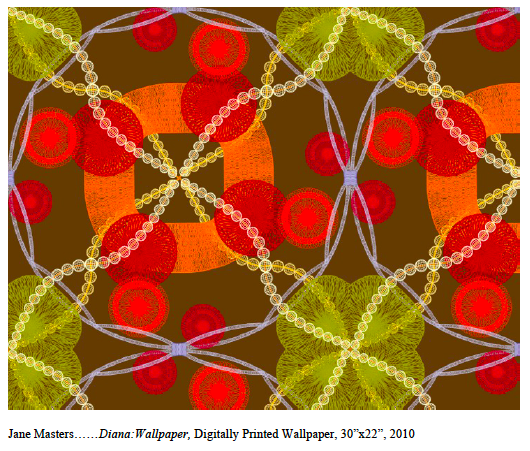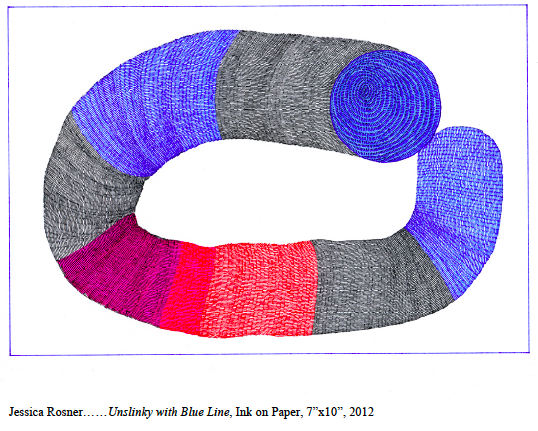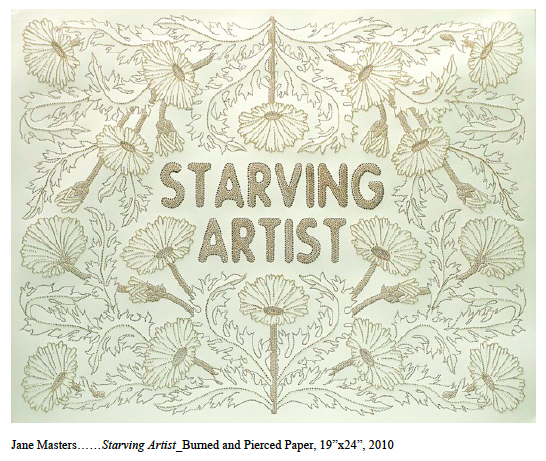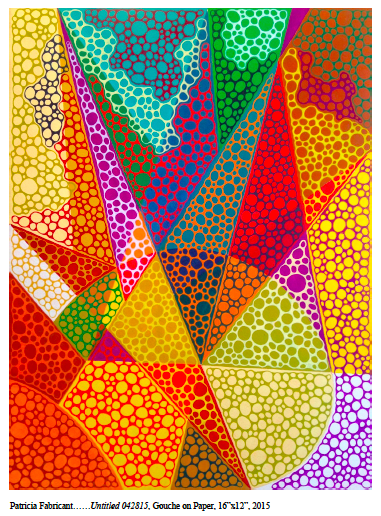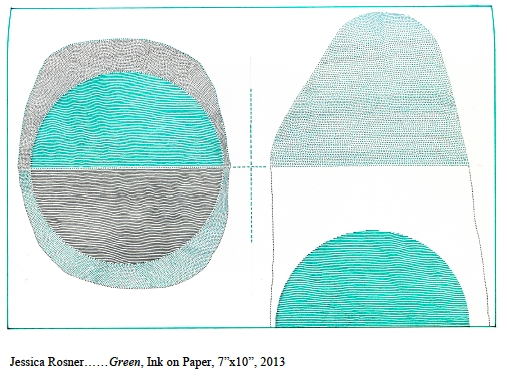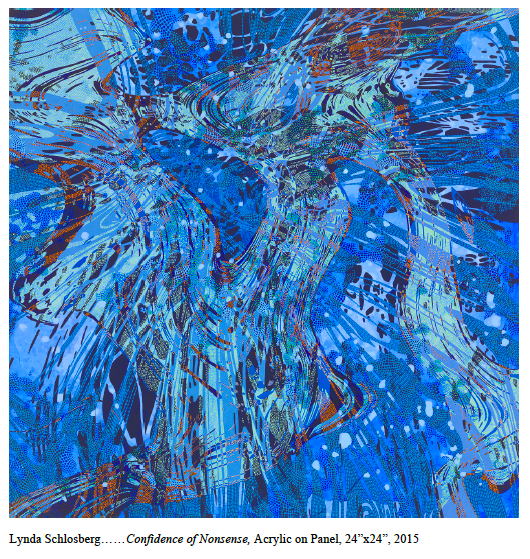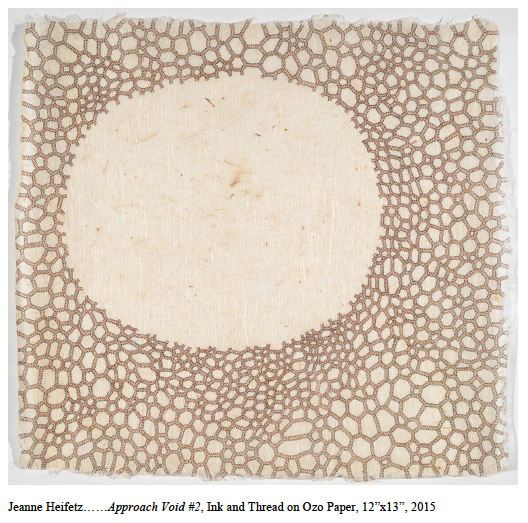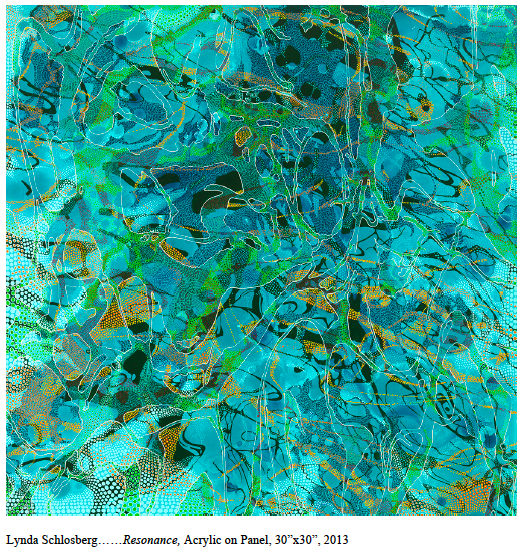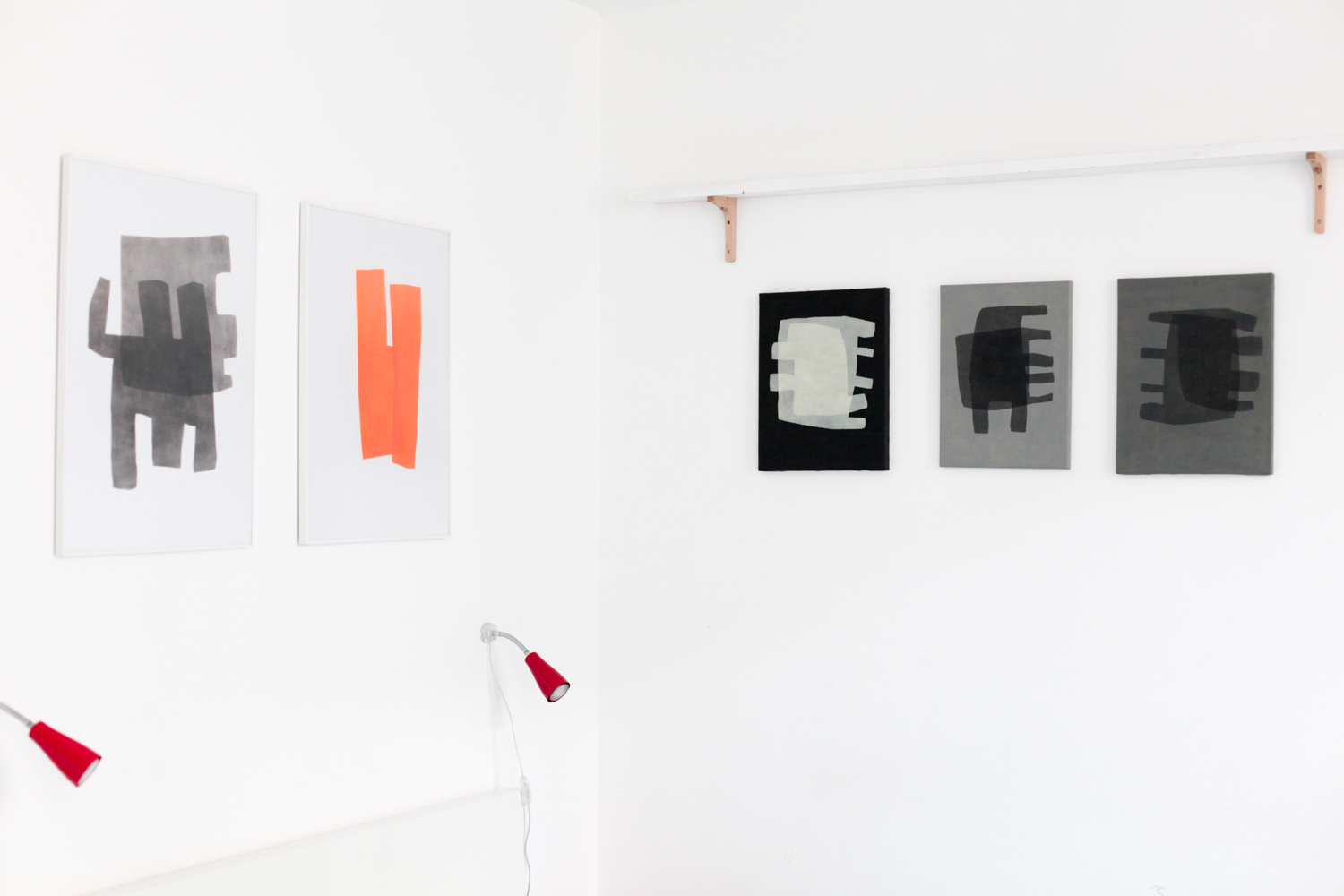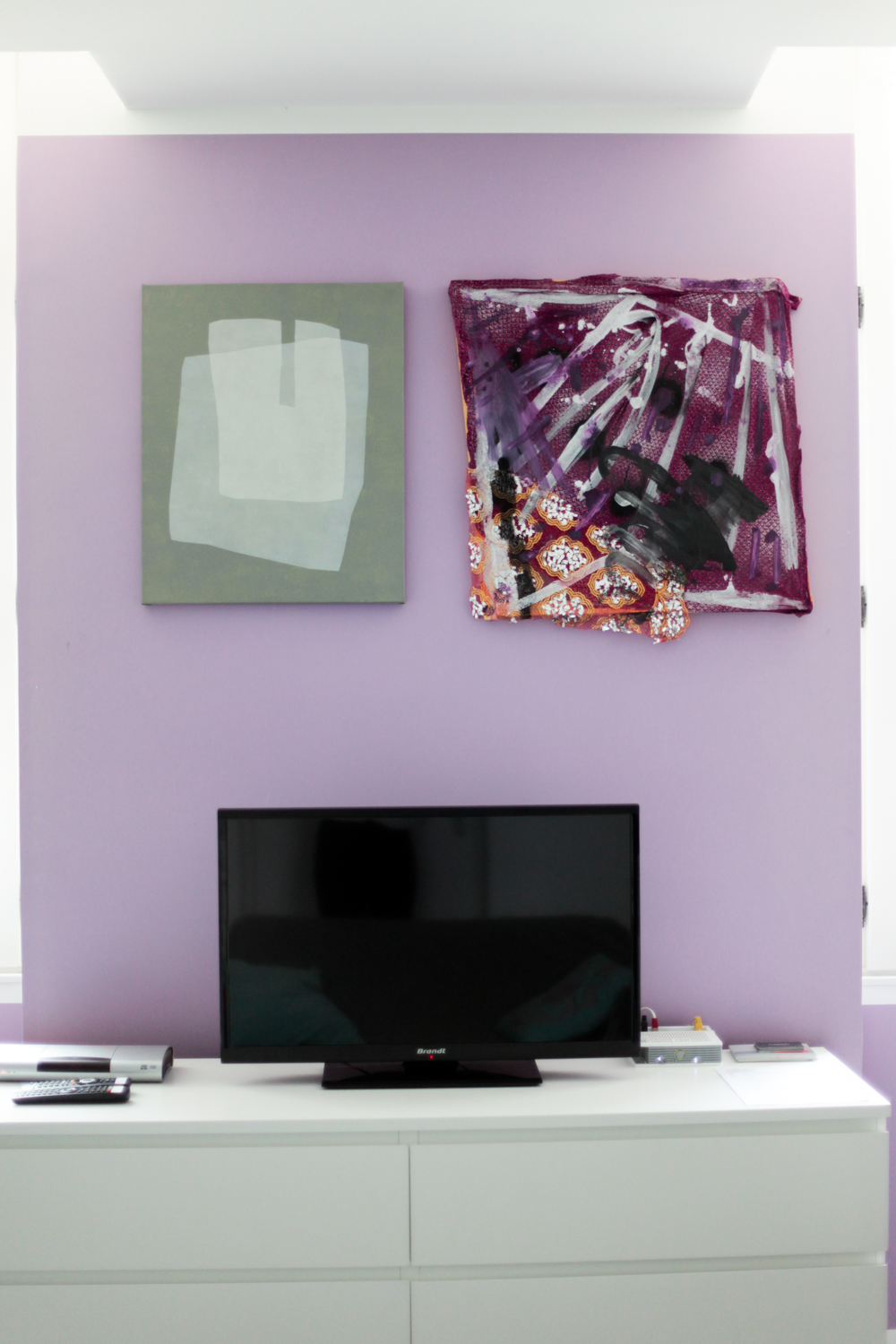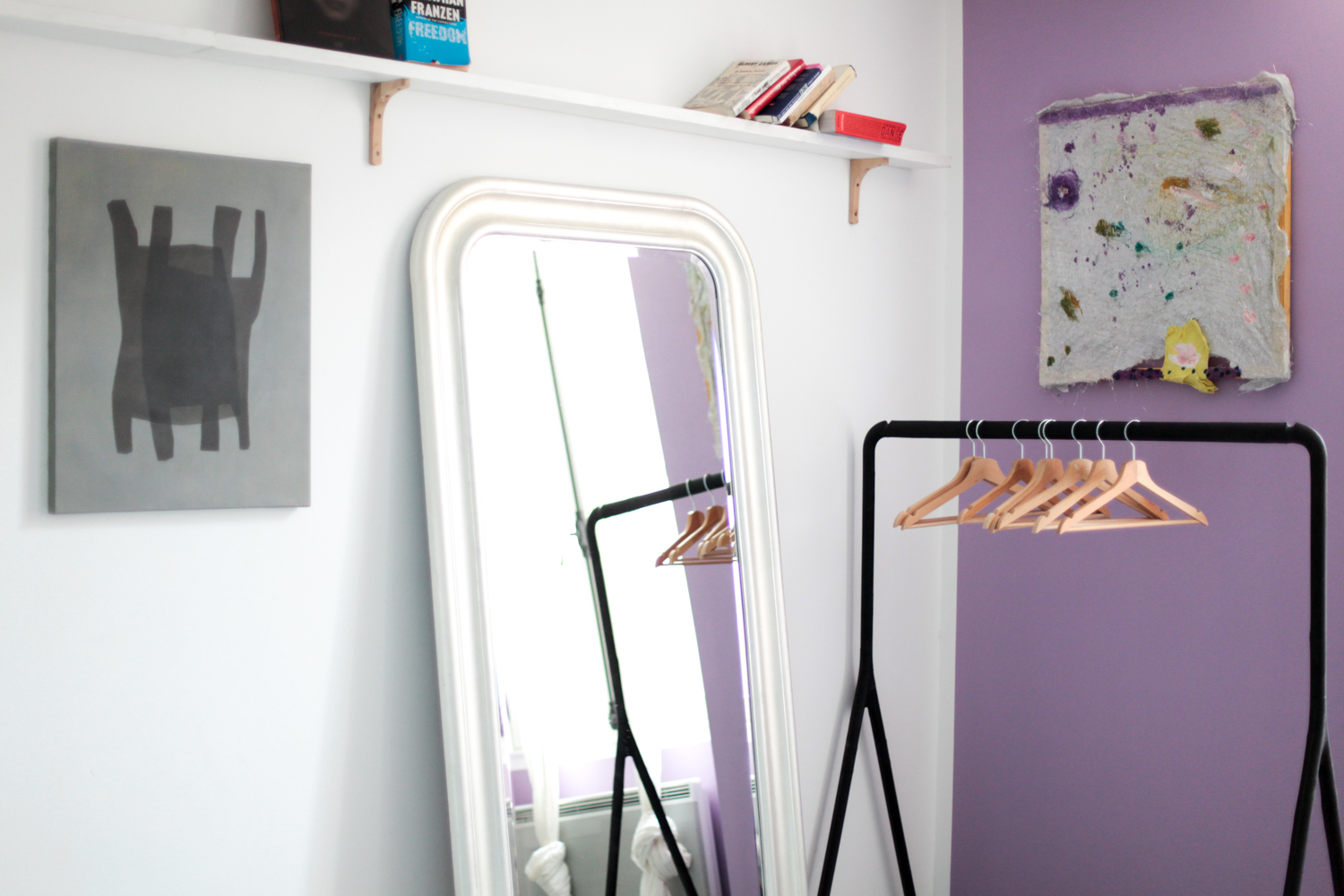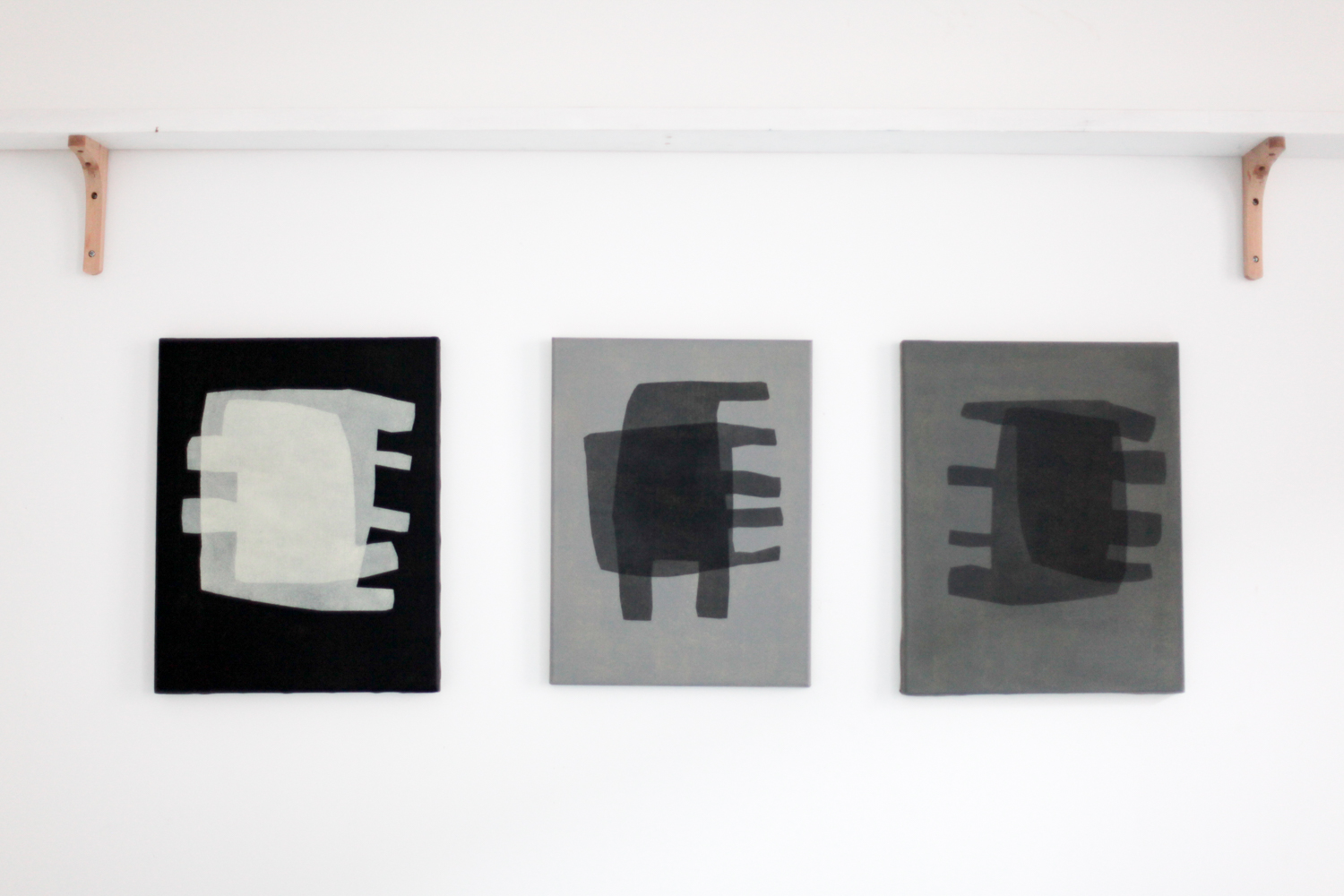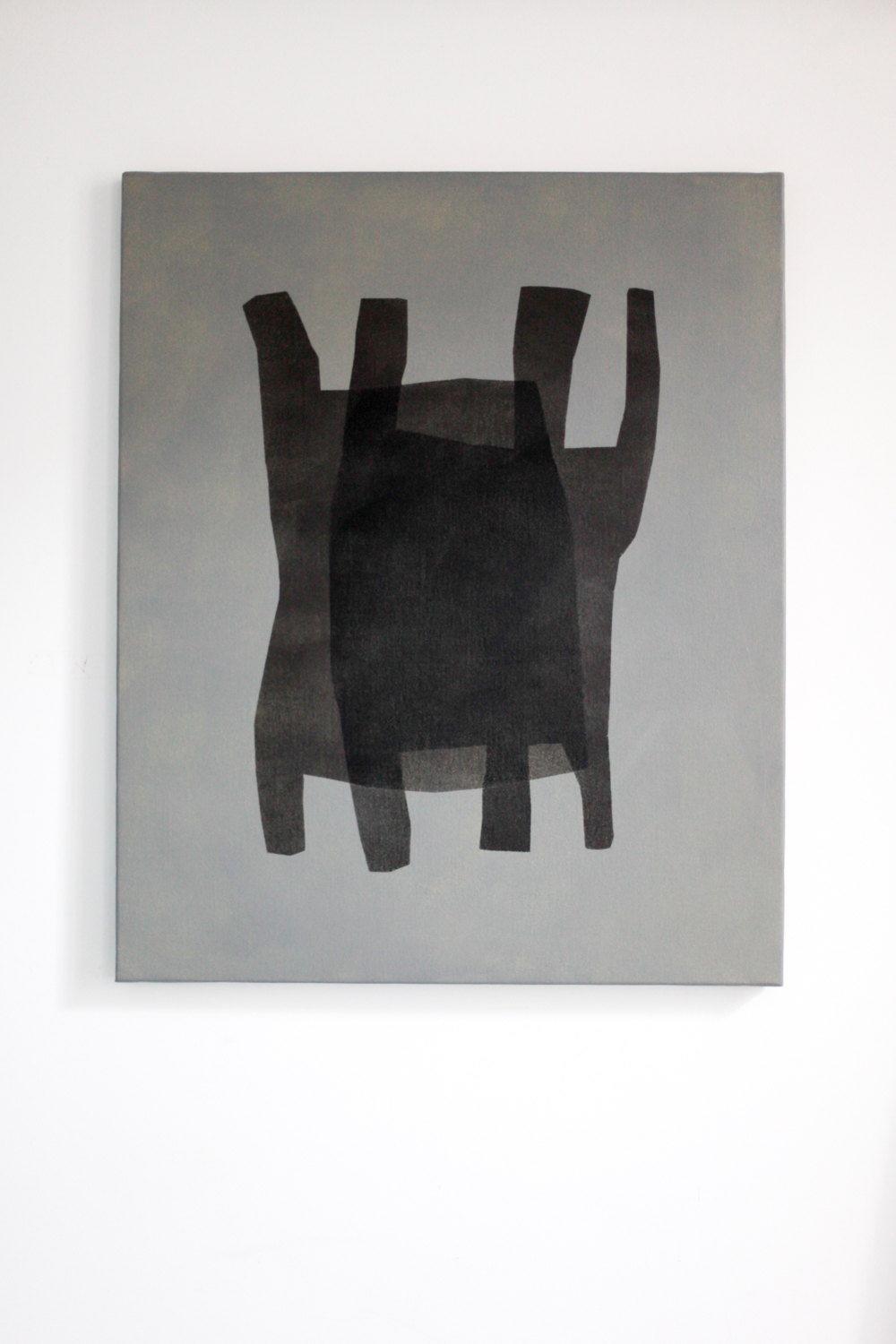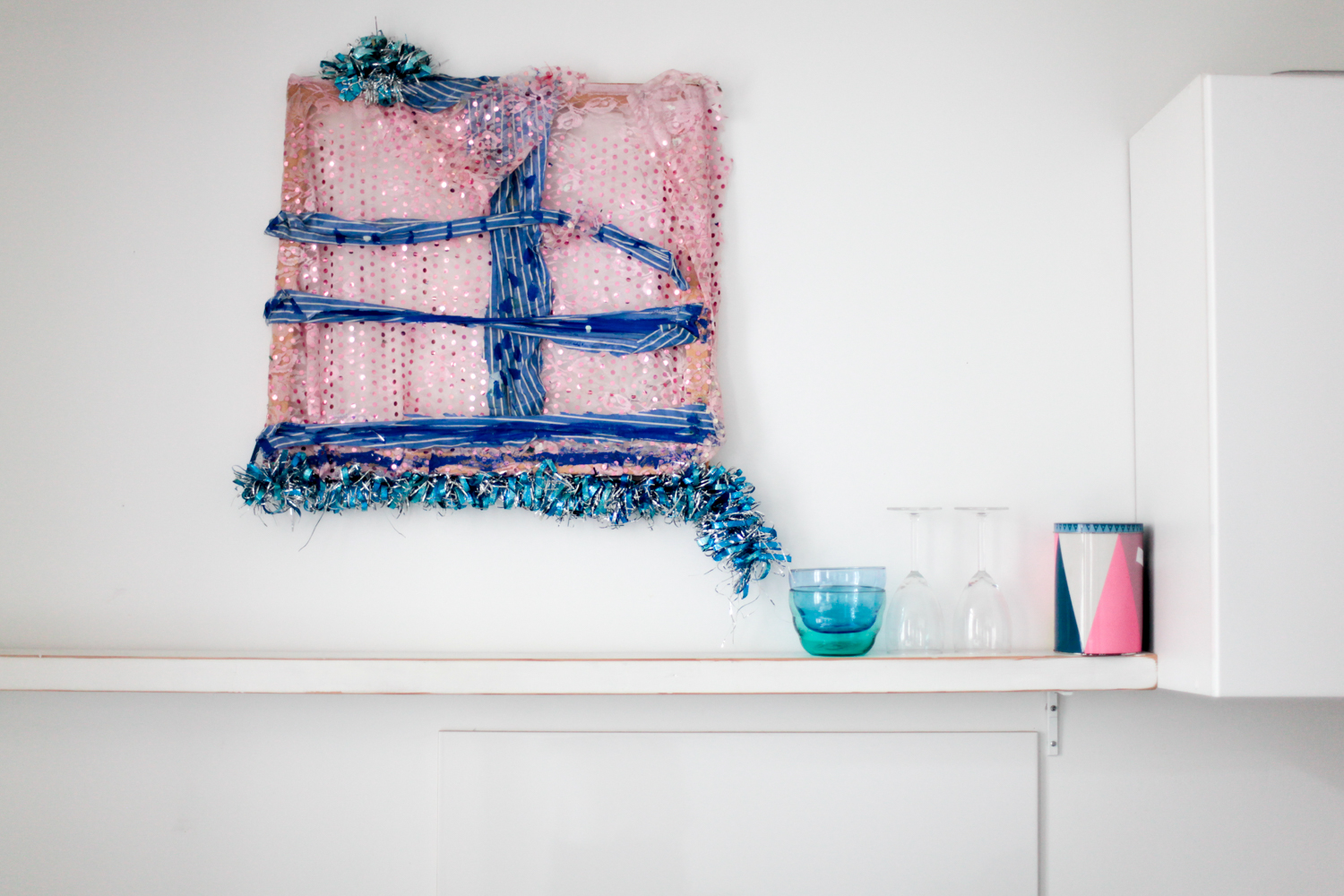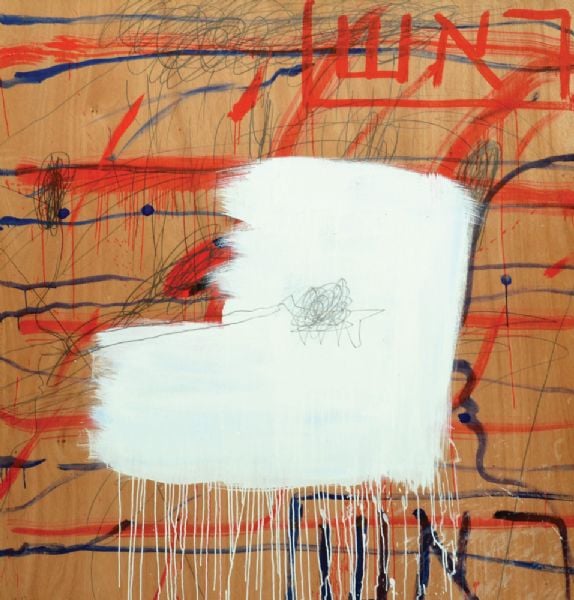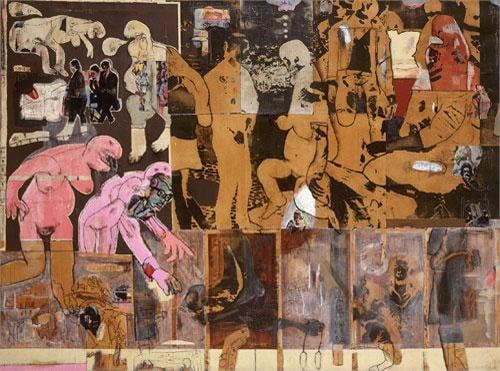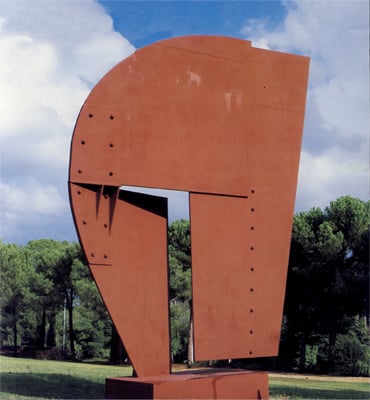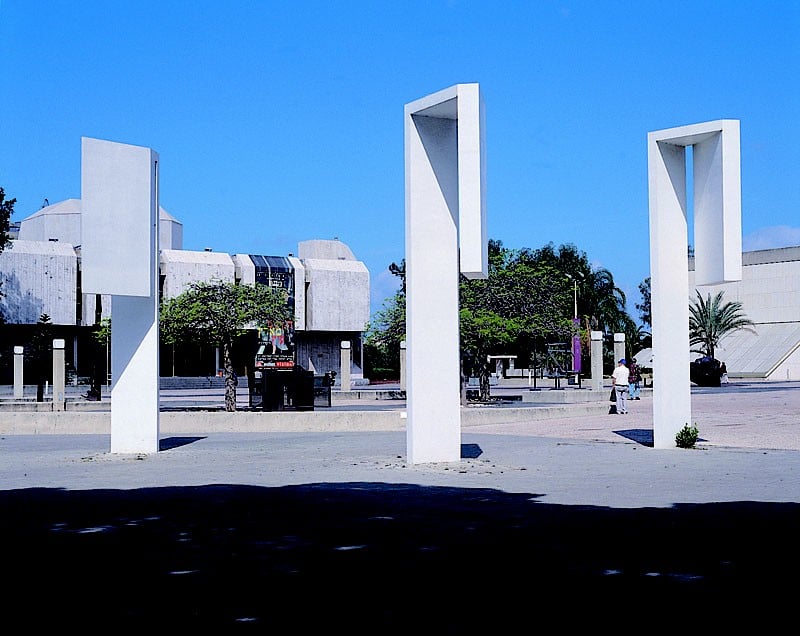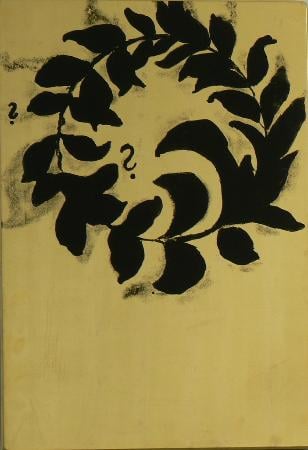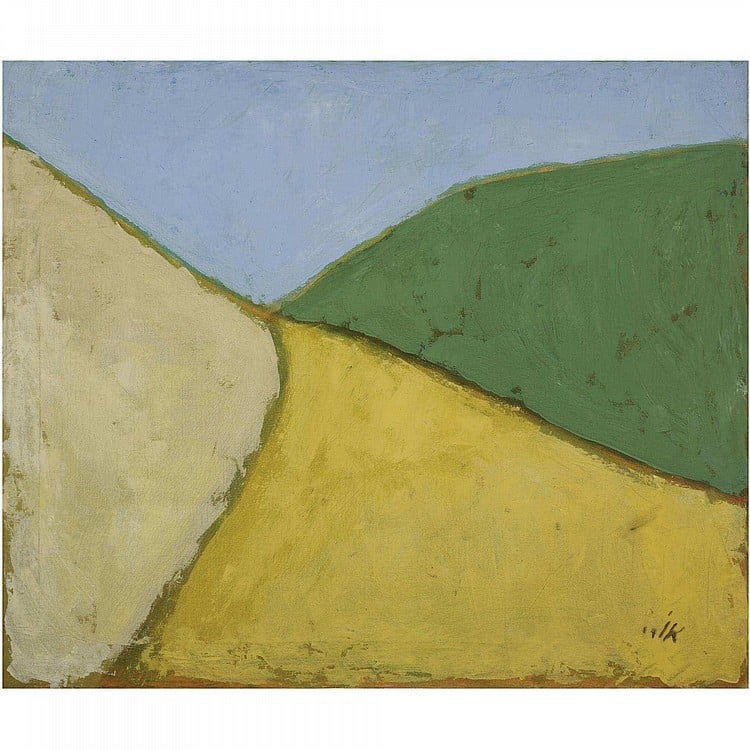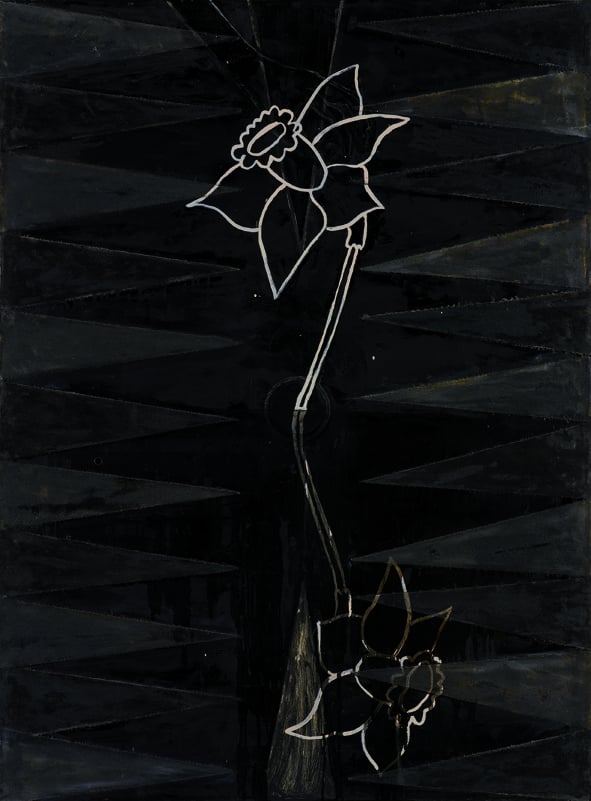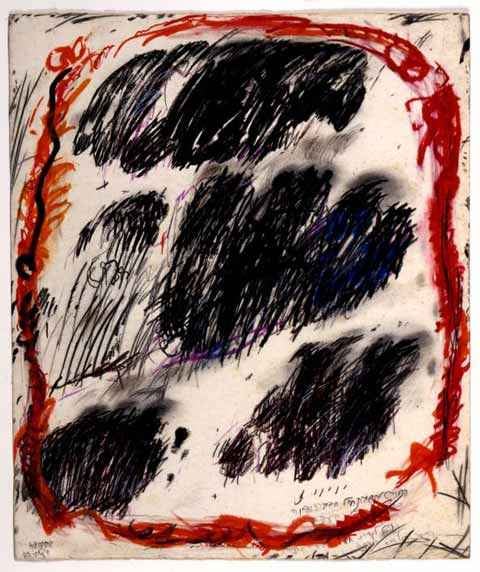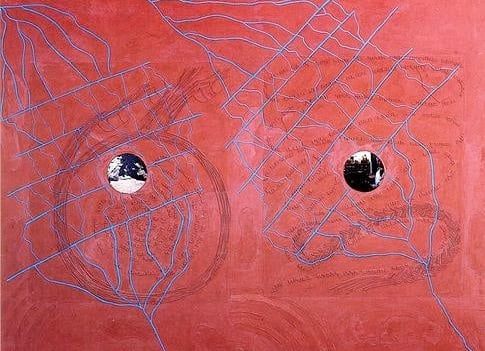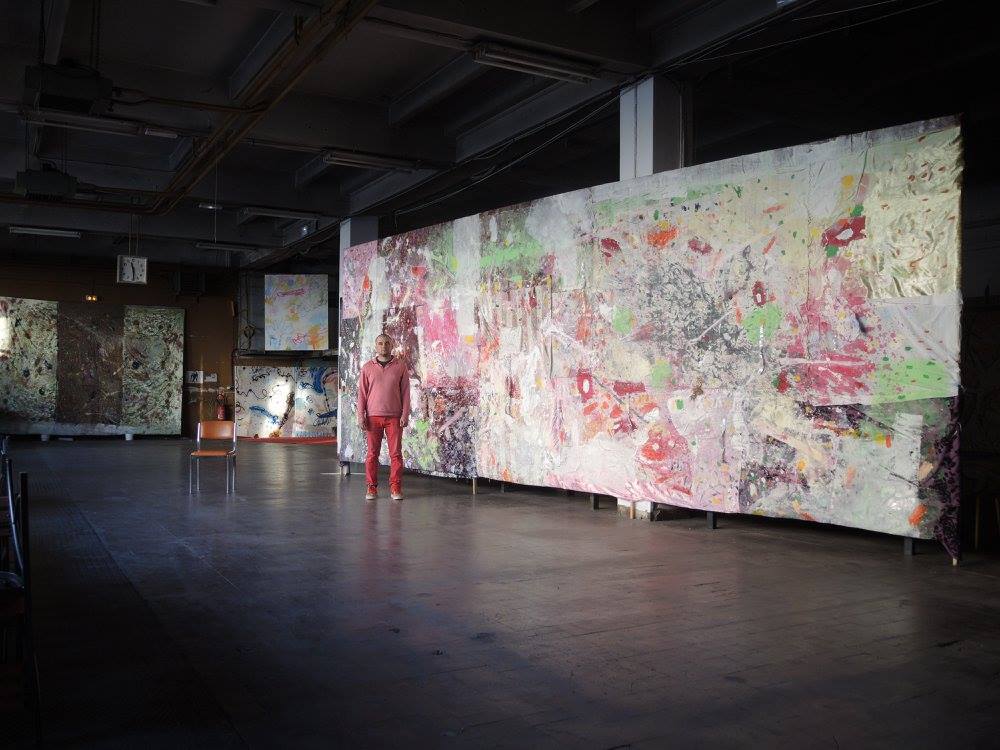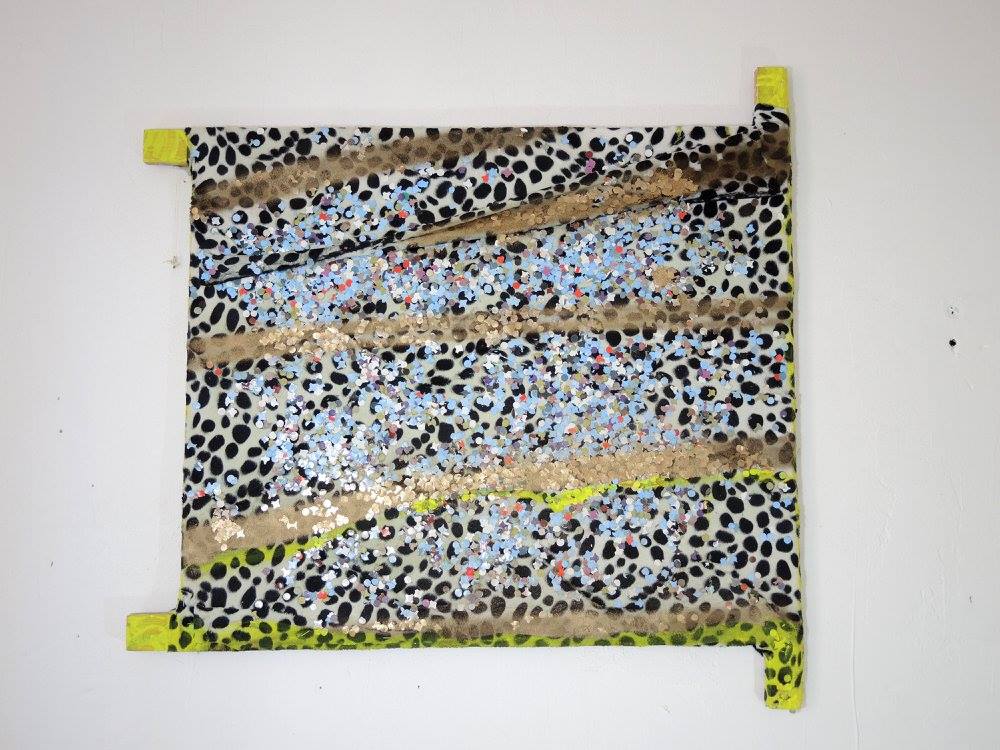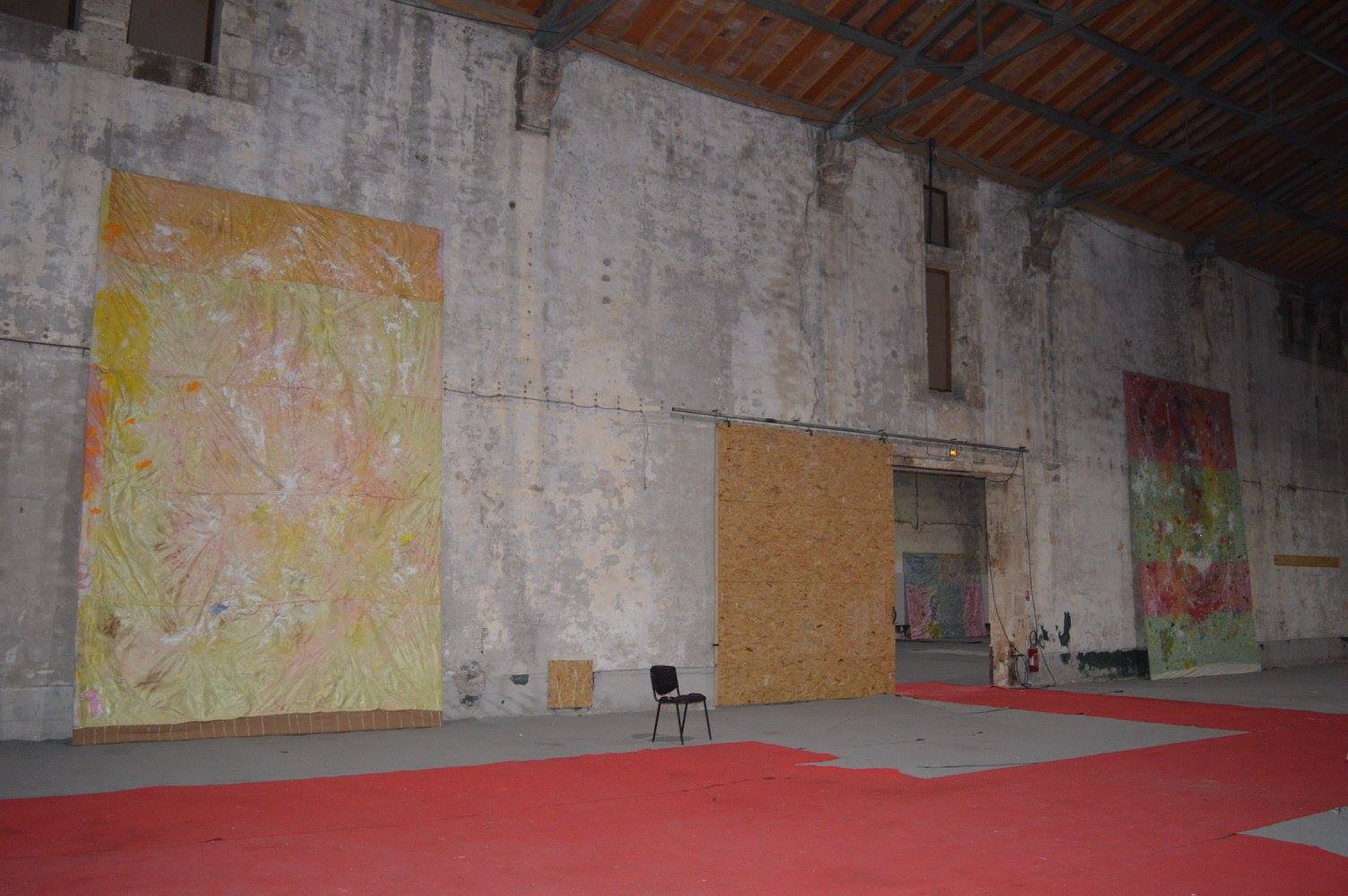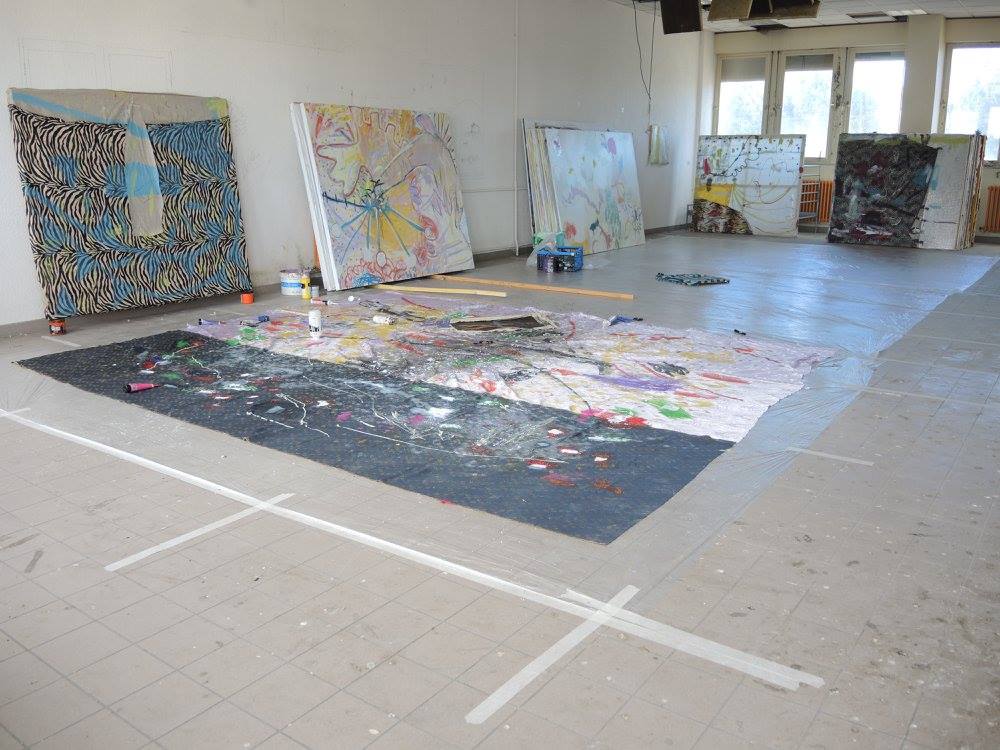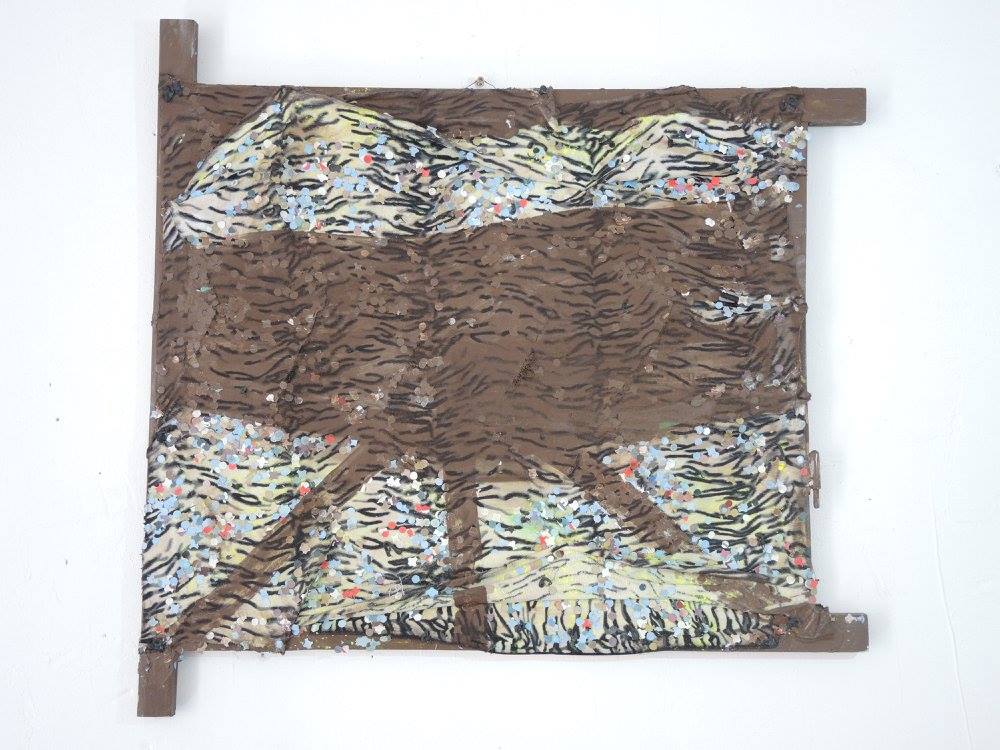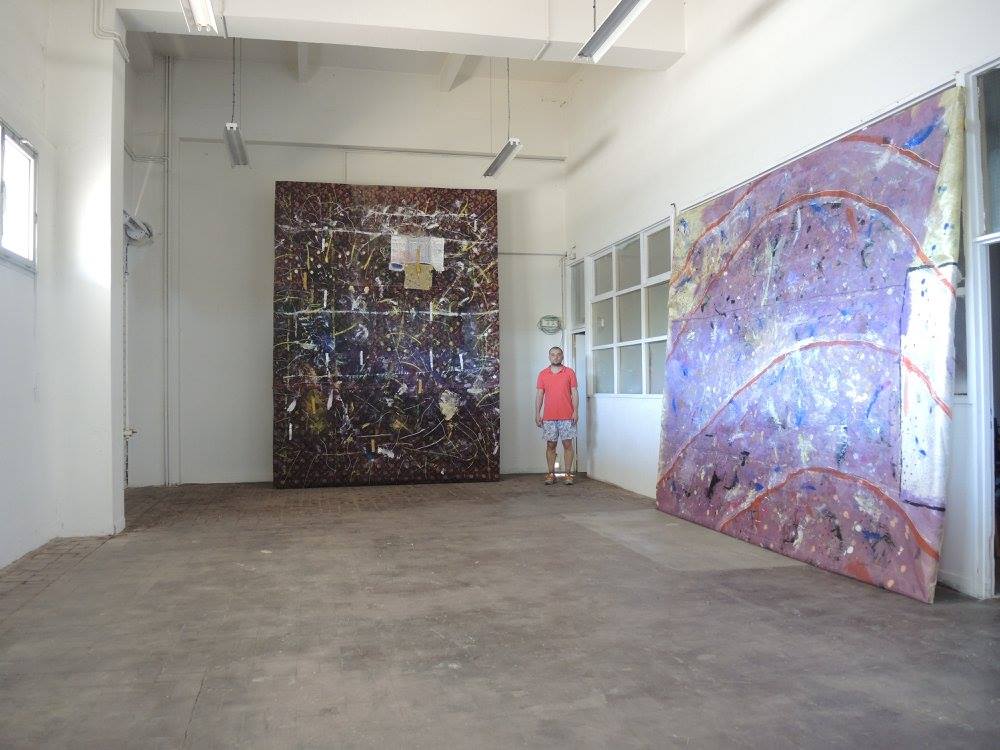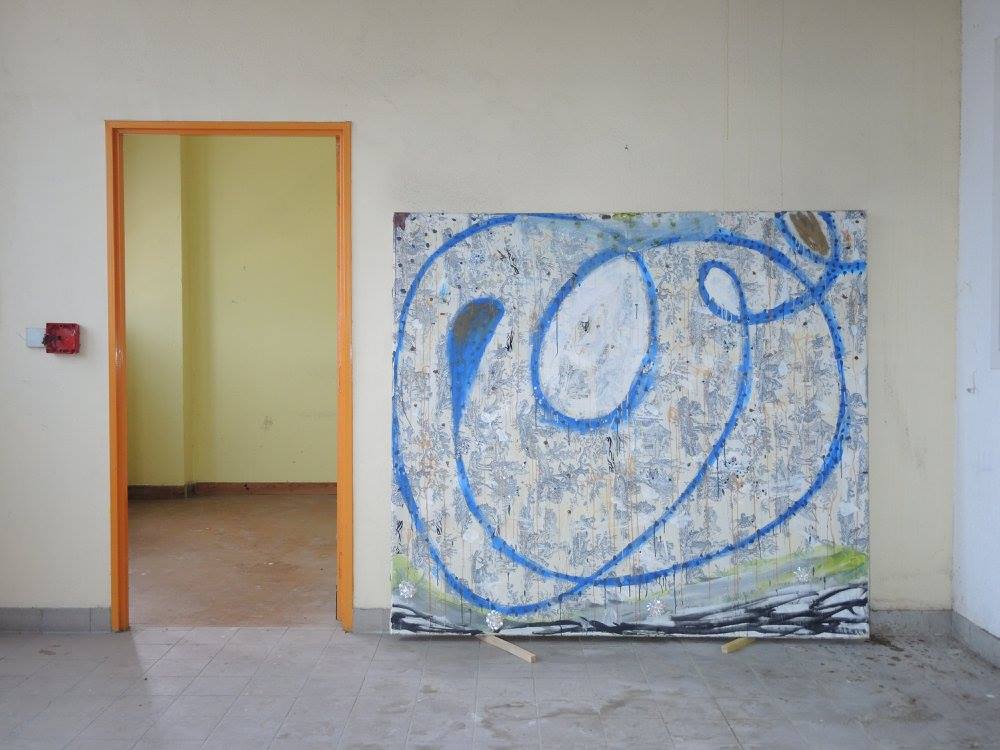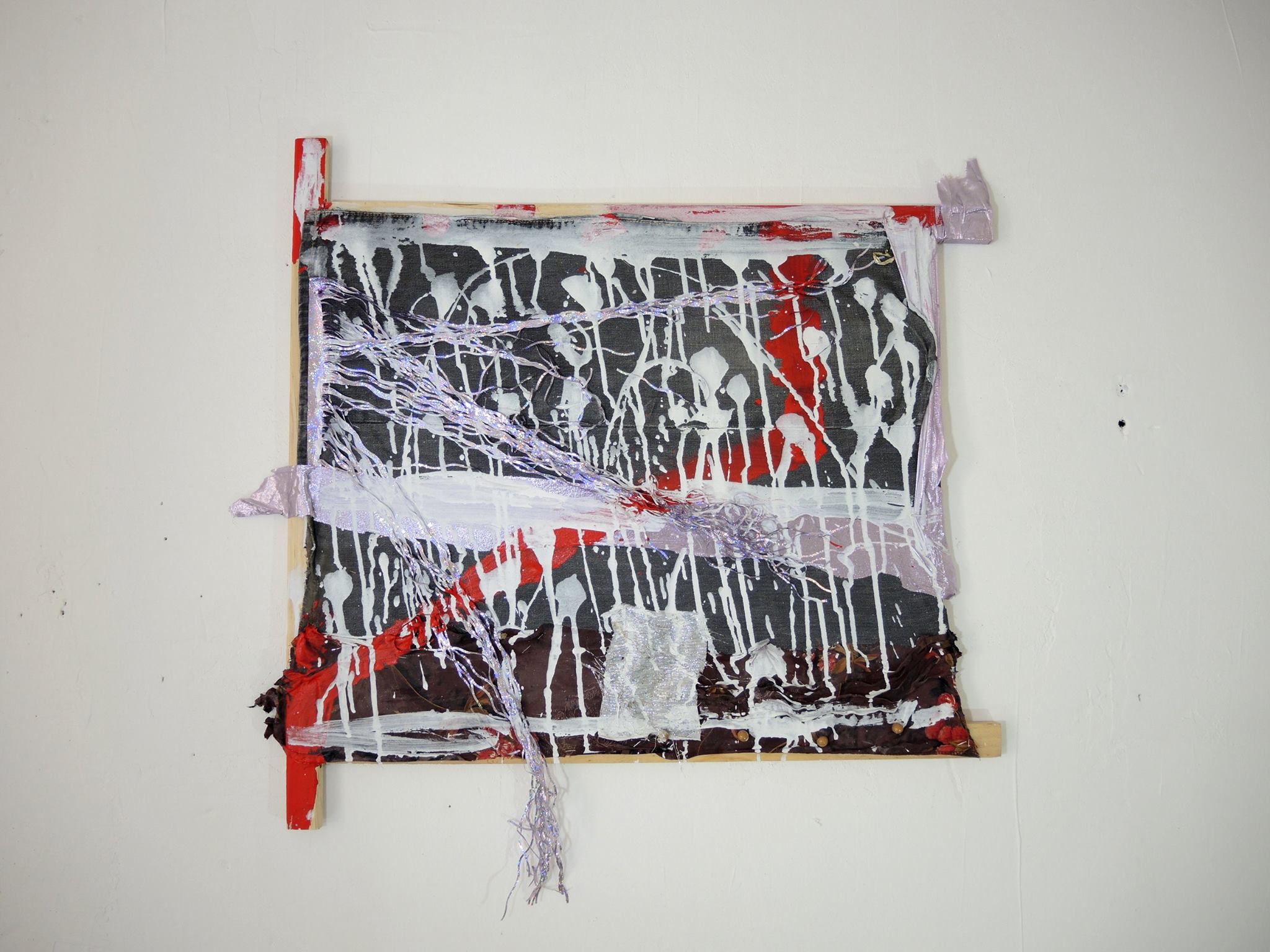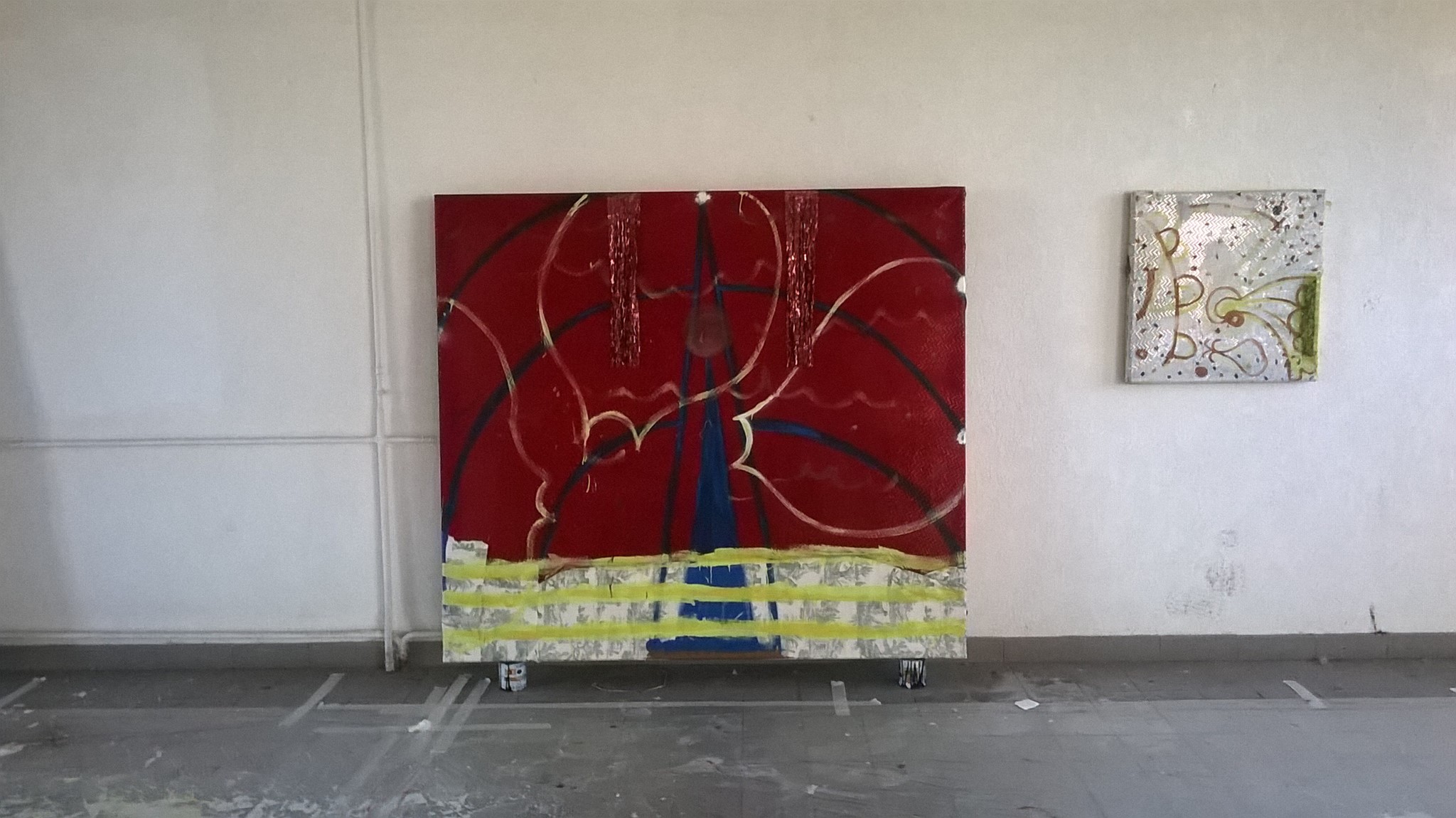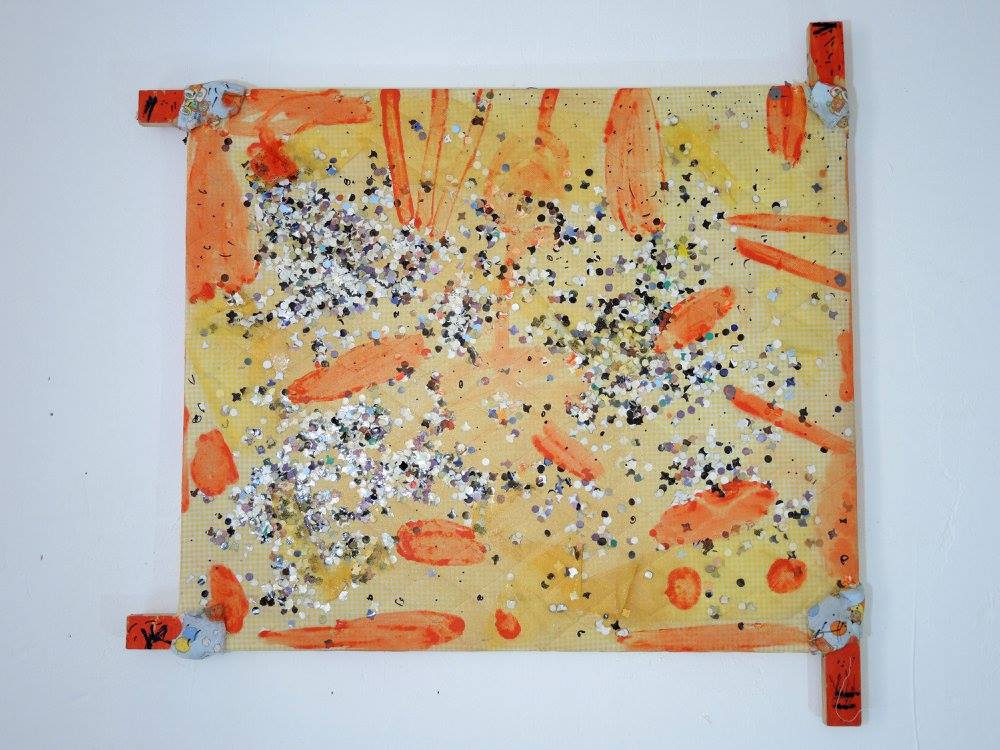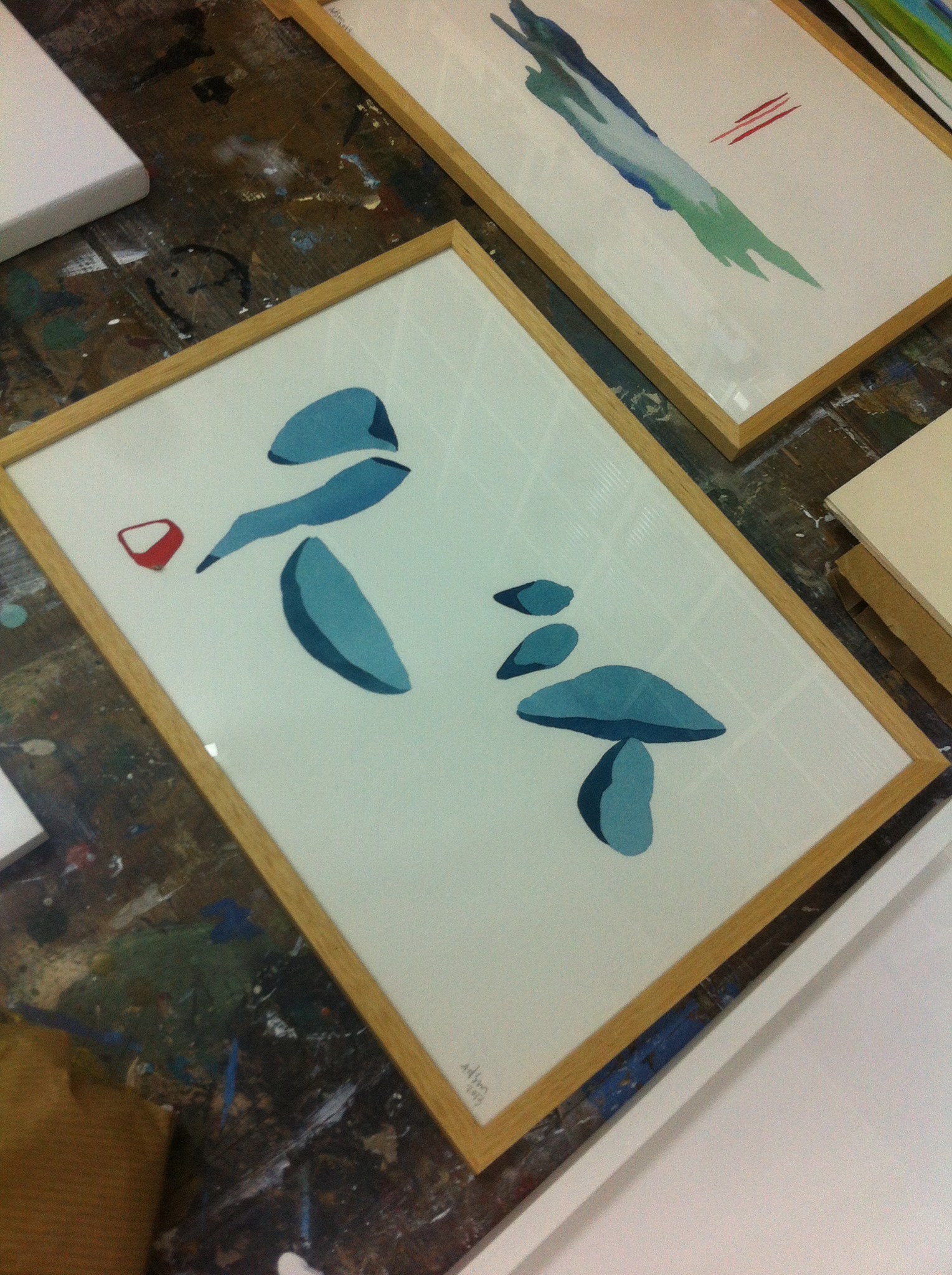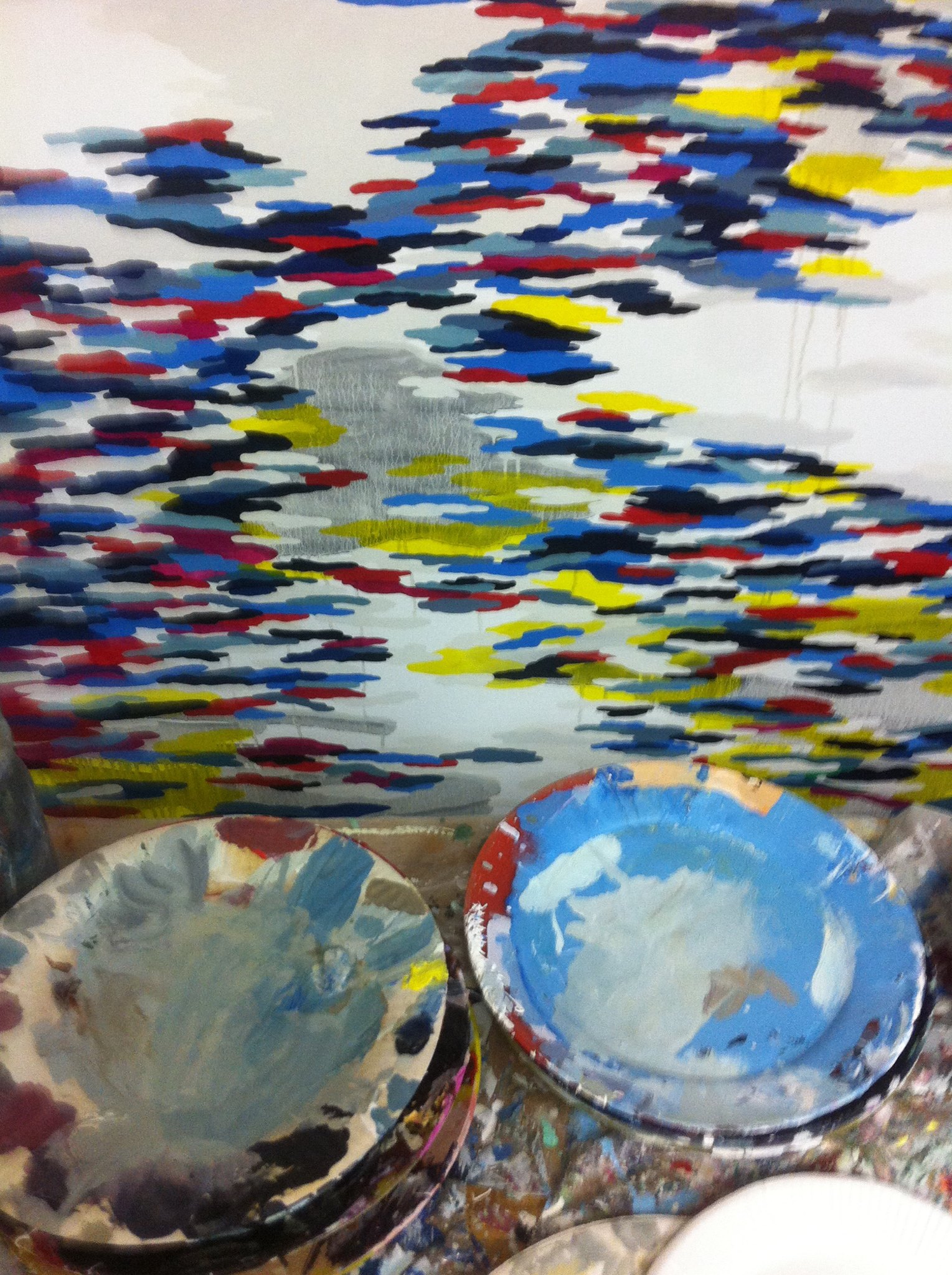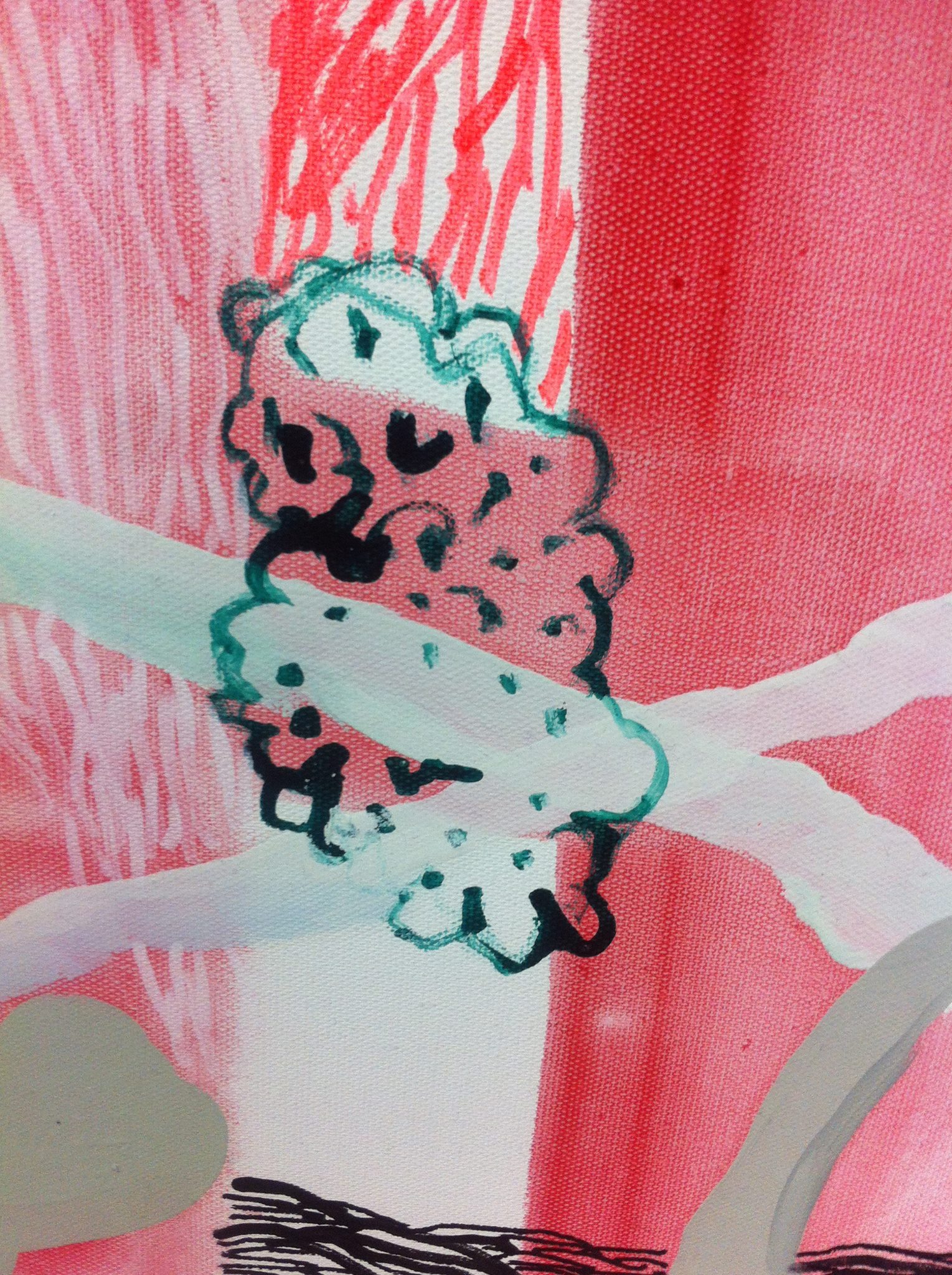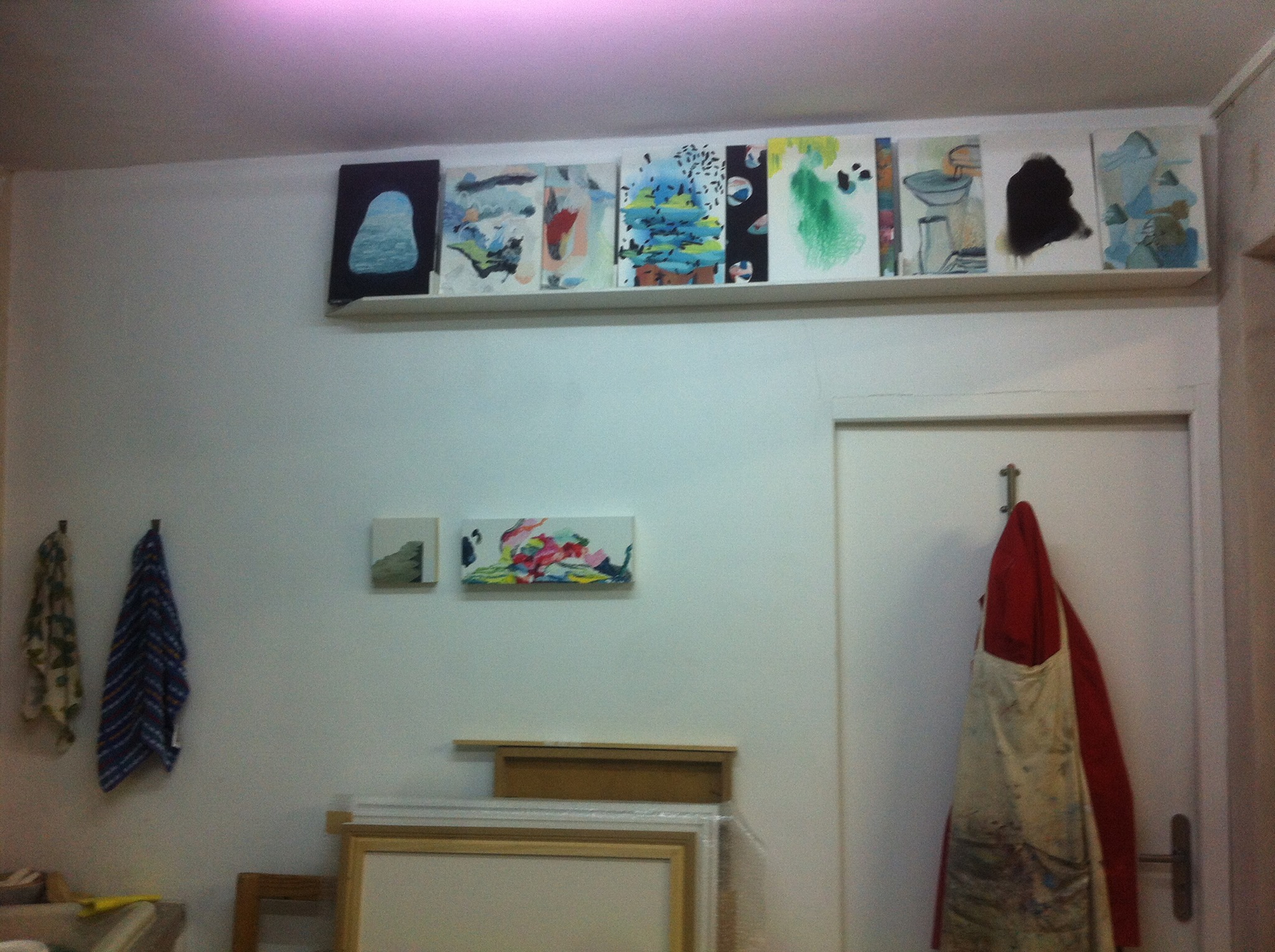The images in this 10Q&A are taken from Erin's first Museum exhibition PAINT.NOW at Ny Carlsberg Glyptotek, Copenhagen.
Photo by Martin Vintner-Jackson
From the catalog :
Erin Lawlor (1969 ) paints oil paintings using the ”wetonwet” technique, also called alla prima. Wetonwet is oil painting which is done without underpainting or intermediate drying. Lawlor’s paintings are created through a demanding physical process where the painter stands and the canvas is on the floor. With a large broomlike brush the paint is drawn across the surface in several layers, the process permitting the paint to ”find its own paths” on the canvas, flowing freely to the side, up, down and diagonally. It is thus the material itself which shapes the motif, which is composed of only pigments, brushstrokes and paints.
PAINT.NOW presents an example of oil painting today, and is a supplement to the exhibition PAINT which displays nine of the Glyptotek’s French masterpieces from the 19th century. These paintings are exhibited without their frames, where, instead, the exposed edges of the canvas invite a new perspective on technique and painting.
Erin Lawlor lived and worked in France from 1987 to 2012. Currently she lives and works in London. Recently she has had solo exhibitions at the George Lawson Gallery, Los Angeles and San Francisco, Gray Contemporary in Houston, Texas and at Galerie Klaus Braun, Stuttgart Germany.
- Line Clausen Pedersen, Curator.
YG : When did you first knew you wanted to be a painter?
EL : I drew and painted, and took pleasure in it, from my earliest childhood. But I was also a voracious reader and writer it was after a few years in France, when I had the sense of being caught between two languages in both my life and my writing, that the impulse to paint began to come to the fore again, perhaps as a sidestep to that issue. I was also studying Art History at university in Paris at the time, and the more I looked at painting, the more frustrated I was not to be doing!
YG : what were your recent painter ‘happy moments’?
EL : So many... they occur, however briefly, every day in the studio. That is, after all what it is about. Those moments of forgetting oneself entirely, being absolutely caught up with and engaged in what is happening on the canvas. Otherwise I have just been back to the Glytpotek to see the exhibition there with my sister for the first time since the opening, and it was a wonderful sensation to see the work, my work, in that context, but with a little more distance (and a little less stress!). And truly wonderful to see the response to the work there the fact of that dialogue in itself, with the museum, and particularly Line Clausen Pedersen, the curator of both my exhibition and the ‘Paint’ show of French Masters that it is concurrent to, has been extraordinary; it has also been a pleasure and surprise to have had such lengthy conversations with others at the museum, visitors and spectators but also other museum personnel, including many of the guards, who seem moved by the work.
YG : What impact did your family life had on your work (parents, partners, kids)?
EL : I grew up in a household where painting, and art, were certainly both present and encouraged on my mother’s side there have been generations of very proficient painters; but where paradoxically perhaps it was not considered as something you did as a career really. And I was academic, so that was certainly encouraged more in school (and society in general), as a direction to take...But it took me a long time to have the confidence to define myself as a painter. My exhusband’s parents had both been painters, so he was familiar with some of the dynamic involved, but having children, the whole ‘praminthehallway’ thing, is a reality. There’s an incessant juggling of time and energy on all fronts, the constant sense of never doing enough all round but I also think that, beyond it being so obviously enriching, it also actually taught me to use my time better you’re very aware of how precious a commodity that is, when you can finally get to the studio! It created a discipline, and a work ethic. My children are grownup now, so it’s less of a balancing act. And my daughter is currently studying drama at Goldsmith’s, so it seems I haven’t managed to totally put them off the creative lifestyle.
YG : Looking back, what were your biggest challenges to get where you are today, and how did you overcome them?
EL : As I said, the struggles with time and energy, having a family, are a reality. The constant juggling, doing other jobs to pay the bills on occasion too...And yet, it’s just not something I’ve ever really questioned. There have of course been struggles, at times in the studio, particularly around 20002003, when I was shifting from figurative work to more abstract, and feeling very lost as to where I was going, and whether I even had anything left to say. It was frightening. But the only way to overcome any of it is to work through it. I think it was Georgia O’Keeffe who said she’d been terrified all her life but never let it stop her from doing anything. The main struggle, probably, is doubt, and selfdoubt, but I think that’s part and parcel of the creative process. But really my biggest challenges, struggles in life have been outside the studio, on a personal level and what life throws at you painting has always been my go-to place, with its own internal logic and pleasures. Challenging, yes, but in a positive way.
YG : What are your current/future projects in or outside the studio?
EL : It’s been a slightly crazy year or two, even for me moving countries, solo shows last year at the George Lawson Gallery in San Francisco, and at Galleri Klaus Braun in Stuttgart, a number of group shows, as well as the shows I’ve curated, with Look& Listen in St. Chamas, with Andrey Volkov in Moscow, at RaumX in London with Martina Geccelli...and now the Glyptotek exhibition, which I’ve been working on flatout for some months. Right now, I’m trying to actually just take a step back and both take stock and enjoy the moment! Something that’s traditionally hard for me, as I’m an obsessive worker. That said, I am lucky enough to have a wonderful and large studio space that I’m subletting at the moment, so I’ll be using the time I have left there to carry on working on a larger scale, which I’ve been enjoying, physically gruelling as it is.
YG : Can you share about your practice main choices regarding color-size-form ?
EL : In terms of the work as it is today, after twentyfive years of painting, I’d be hardpressed to justify with rapidity the choices of either colour or form, in that they have resulted from so many microdecisions along the way, at times a paring down, at others an opening up and exploration of what have gradually imposed themselves as essential to me...brushmark and form are very much one in my work. There is currently an opening up of colour, and more complex compositions, quite simply due to a growing confidence in my use of paint as a language. And these in turn perhaps allow more narrative to creep in. But it remains an abstract narrative. As for size I enjoy working in all sizes, small, medium and large, and switch between them regularly, which is perhaps unusual. Working large, there are, however, quite simply practical constraints, both of studio size (always a problem in London, as in most big cities!) and my own physical limits working on the ground, the reach of my own body, and arm, are a factor.
YG : Can you elaborate on how social media influences your work?
EL : I’m not sure I would say that social media per se influences my work in the studio. I have always looked at other people’s work constantly as I said, I studied art history, and for the first years I was painting I hung on to my student card and would constantly head over to the Louvre to see Rembrandt’s beef carcass or to the Pompidou Center, to get my fix there.
Social media has of course been wonderful in terms of seeing so much of other artists work, direct from their studios, and discovering so much — there have also been a number of very real friendships and dialogues (too many to name here! but yourself included) that have come out of it...certainly when I was in France in particular, and in a context that was largely dismissive of, if not overtly hostile to, painting as a medium, it was a relief to find that there were likeminded people out there in other places that painting as a tradition was still going strong, particularly in the US.
I was more surprised when these dialogues evolved into actual work opportunities, in terms of exhibitions, gallery representation and became a clearly useful vector in terms of my own curatorial experiences. It is a marvellous tool that we have at our disposition these days, in terms of seeing so much, but also showing the work, and getting feedback.
YG : what impact do you hope your paintings will have on the life of the people who choose to take them home?
EL : I would assume that for them to be taking them home it’s already had an impact! And yes, as personal as the work is, it is both a relief and hugely gratifying to find that what I do communicates at some level to others...I also feel very strongly about the very particular time of painting as a medium, the fact that they are not only immediate images, but rather reward a longer viewing, and that the way in which I use paint means that the colour and light are constantly shifting. They are also open images, I hope, with a variety of possible readings, depending on what the spectator brings to it. In that sense, I hope those who take them home have a continued pleasure in and dialogue with them.
YG : what advice can you give to a beginner painter?
EL : Someone (I think it was Michael CraigMartin) recently said he told his students ‘if you can do something else do it’ probably very true, as it’s certainly not a career plan! The ones who stick the path are the ones who can’t not. Other than that, I’d say look at other people’s work, talk to other artists. Above all just paint. There is no substitute for getting into the studio and working. It takes time, and stubbornness, to learn your medium, and to find your voice.
YG : Anything else?
EL : I’d like to just reiterate how utterly privileged I feel to have had this opportunity to see my work in such a context at the Glyptotek. We all, in the studio, have those ongoing dialogues with our forbears, but it’s a leap to show in context with them, and to bring other people to perceive that ongoing thread of paint as a language through Manet and Courbet to today. I feel so very lucky!


